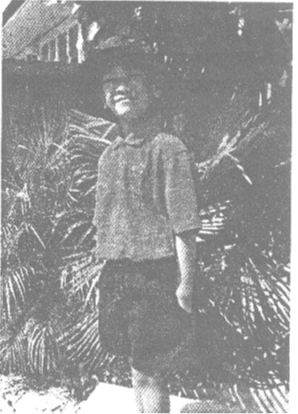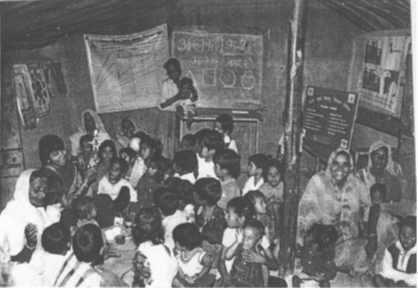- Books Name
- CBSE Class 7 Social Science Book
- Publication
- Param Publication
- Course
- CBSE Class 7
- Subject
- Social Science
* INTRODUCTION
Gender--meaning
By gender, we mean the many social values and stereotypes our cultures attach to the biological distinction ‘male’ and ‘female’. it is a term that helps us to understand many of the inequalities and power relations between men and women in society.
Two case studies:
* Growing up in Samoa in the 1920s

(i) The Samoan Islands are part of a large group of small islands in the southern part of the Pacific Ocean.
(ii) In the 1920s, according to research reports on Samoan society, children did not go to school.
(iii) Fishing was a very important activity on the islands. Young people, therefore, learnt to take undertake long fishing expeditions.
(iv) As soon as babies could walk, their mothers or other adults no longer looked after them. Older children, often as young as five years old, took over this responsibility.
(v) Both boys and girls looked after their younger siblings.
(vi) But, by the time a boy was about nine years old, he joined the older boys in learning outdoor jobs like fishing and planting coconuts. Girls had to continue looking after small children or do errands for adults till they were teenagers.
(vii) But, once they became teenagers they had much more freedom. After the age of fourteen or so, girls also went on fishing trips, worked in the plantations, learnt how to weave baskets.
(viii) Cooking was done in special cooking-houses, where boys were supposed to do most of the work while girls helped with the preparations.
* Growing up male in Madhya Pradesh in the 1960s
(i) From Class VI onwards, boys and girls went to separate schools.
(ii) The girls’ school was designed very differently from the boys’ school. They had a central courtyard where they played in total clusion and safety from the outside world.
(iii) The boys’ school had no such courtyard and our playground was just a big space attached to the school.
(iv) Every evening, when school was over, the boys watched as hundreds of school girls crowded the narrow streets. As these girls walked on the streets, they looked so purposeful.
(v) This was unlike the boys who used the streets as a place to stand around idling, to play, to try out tricks with their bicycles.
(vi) For the girls the street was simply a place to get straight home. The girls always walk in groups, perhaps because they also carried fears of being teased or attacked.
* HOW DO SOCIETIES MAKE CLEAR DISTINCTIONS BETWEEN BOYS AND GIRLS
(a) Boys are usually given cars to play with the girls dolls. Toys become a way of telling children that they will have different futures when they become men and women.
(b) How girls must dress, what games boys should play, how girls need to talk softly of boys need to be tough. All these are ways of telling children that they have specific roles in play when they grow up to be mens and women.
(c) In most societies, including our own, the roles men and women play the work they do, are not valued equally. Men and women do not have the same status.
Illustration 1
What do you mean by Identity
Solution
Identity is a sense of self awareness of who one is.Typically a person can have several identites.
For Ex: A person can be a girl, a sister and a musician.
Illustration 2
What is care-giving?
Solution
Care giving refers to a range of tasks related to looking after an nurturing. Besides physical tasks,they also involve a strong emotional aspect.
* VALUING HOUSEWORK
Across the world, the main responsibility for housework and care living tasks, like looking after the family, expecially children, the elderly and sick members, lies with women. Yet as we have seen, the work that women do within the home is not recognised as work. It is also assumed that this is something that comes naturally to women and society evalues this work.

* Lives of Domestic workers
(i) Many homes, particularly in towns and cities, employ domestic workers.
(a) They do a lot of work- sweeping and cleaning, washing clothes and dishes, cooking, looking after young children or the elderly.
(b) Most domestic workers are women.
(c) Sometimes, even young boys or girls are empolyed to do this work.
(d) Wages are low, as domestic work does not have much value.
(e) A domestic worker’s day can begin at twelve at night.
(f) Despite the hard work they do, their employers often do not show them much respect.
(ii) In fact, what we commonly termed as housework actually involves many different tasks. A number of these tasks require heavy physical work.
(a) In both rural and urban areas women and girls have to fetch water.
(b) In rural areas women and girls carry heavy headloads of firewood.
(c) Tasks like washing clothes, cleaning, sweeping and picking up loads require bending, lifting and carrying.
(d) Many chores, like cooking, involve standing for long hours in front of hot stoves.
(e) The work women do is strenuous and physically demanding - works that we normally associated with men.
(f) Another aspect of housework and care-giving that we do not recognise is that it is very time consuming.
(iii) Below is some data from a special study done by the Central Statistical Organization of India (1998-1999). See if you can fill in the blanks.

* Women’s Work And Equality
(i) The Constitution says that being male or female shoule not become a reason for discrimination. In reality, inequality between the sex exists. The government is, therefore, committed to understanding the reasons for this and taking positive steps to remedy the situation.
(ii) The government has set up a or child-care centres in several villages in the country.
(iii) The goverment has passed laws that make in mandatory for organisations that have more than 30 women employees to provide creche facilities.The provision of creches helps many women makes it possible for more girls to attend schools.
Illustration 1
The concept of ‘Double Burden’?
Soution
Literally means a double load.This term is commonly used to describe the women”s work situation.It has emerged from a recognition that women typically labour both inside the home and outside.
Illustration 2
How can you explain the term devalued work?
Solution
When someone is not given due recognition for a task or job they have done,they can feel de-valued
For Ex: The work that women is less valued than that of men.

 Param Publication
Param Publication
